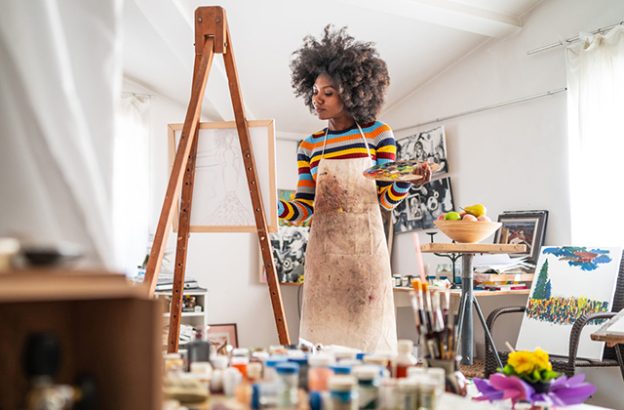Drawing is not a talent you are born with. It’s also not something that can be learned in a weekend workshop or by watching a few YouTube videos. It takes time, effort, and perseverance to learn how to draw well. If you have a creative talent it’s just a piece of icing in the cake to create a concept boards for film.
But you don’t have to do it alone. You have the support of your fellow students, instructors and mentors at this school. You have the experience and wisdom of our alumni. And you have the vast collections of art from around the world that are just a few clicks away online.
Inspiration for your artwork can come from anywhere — whether it’s from an artist whose work you admire or from something as simple as your own imagination.
Like any other creative industry, fine art is often fueled by inspiration. And inspiration can come from anywhere: personal experience, the things you’ve seen in the world around you, or even other artists’ work.
For some artists, the best way to get inspired is to step away from the canvas and tour a museum, attend an art fair or festival, or go on a trip to a new place they’ve never visited before.
Inspiration is the life-blood of art, and it can be difficult to keep your creative tank filled.
Many artists find inspiration through other art — either by studying artists they admire, visiting museums and galleries, or browsing online. But this can actually be a double-edged sword, as it’s easy to get caught up in comparing yourself to others, or feeling like you’re constantly chasing trends.
Other artists never look at other art — instead they work within their own personal style and explore ideas that interest them in that context. This kind of approach tends to produce very distinctive work with a strong “voice” (i.e., style), but the danger here is stagnating and being unable to evolve past an initial idea or concept, or just not being able to come up with new ideas in the first place.
The best way to stay inspired is through a balance of these two approaches. Staying curious about what others are doing is important for keeping tabs on industry trends and evolving your practice. But if you want your work to really stand out, it’s important for it to reflect who you are as an individual — your interests, your perspective, etc., rather than someone else’s.
The best artists are usually those who are the most inspired. While the sheer determination to succeed and overcome obstacles is a great motivator, it isn’t enough to always produce the best art. There’s nothing wrong with suffering from a bout of creative block or struggling to come up with new ideas. The key is knowing how to channel your creativity when you need it.
Artists of all sorts, from painters and sculptors to illustrators and designers, face a daunting task every day. They must create pieces that are meaningful and will resonate with people – something that’s easier said than done. That’s why it’s important to look for inspiration in the right places to keep the creative juices flowing.
To help you out, we’ve put together a list of ways you can find inspiration for your artwork, whether you’re staring at a blank canvas or empty page or looking to get recharged after a long day.
Watch a movie
Movies can be an endless source of inspiration for artists. They provide hours of visual stimulation and stories that can spark your imagination. They can also be great to watch in the background while you work on your piece because they help break up the monotony and keep your spirits up. The next time you need some inspiration, pop in a DVD or turn on Netflix to see if any ideas come to mind.
Read a book
Reading books is another way for artists to find inspiration for their creations. Whether you like non-fiction books about people who have changed the world or science-fiction stories about fantastical worlds, there are lots of books that can inspire artists creatively.
Everyone has an opinion on what makes a great artist: the imagination to make something new, the skill to express it, or the ability to find an audience.
But what makes a great artwork?
The answer seems obvious: A great artwork is one you like.
But there’s more to it than that. A great artwork must also be good in some objective sense — something that inspires you and other people. It is, in fact, the intersection of art and commerce that makes art possible.
Artists are commercial beings; they have to make a living. And if an artist can’t find an audience for their work, they won’t survive financially.
